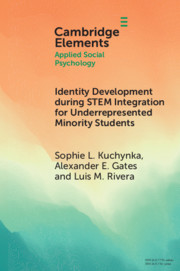Element contents
Identity Development during STEM Integration for Underrepresented Minority Students
Published online by Cambridge University Press: 29 October 2020
Summary
Keywords
- Type
- Element
- Information
- Online ISBN: 9781108882071Publisher: Cambridge University PressPrint publication: 26 November 2020
References
- 10
- Cited by



